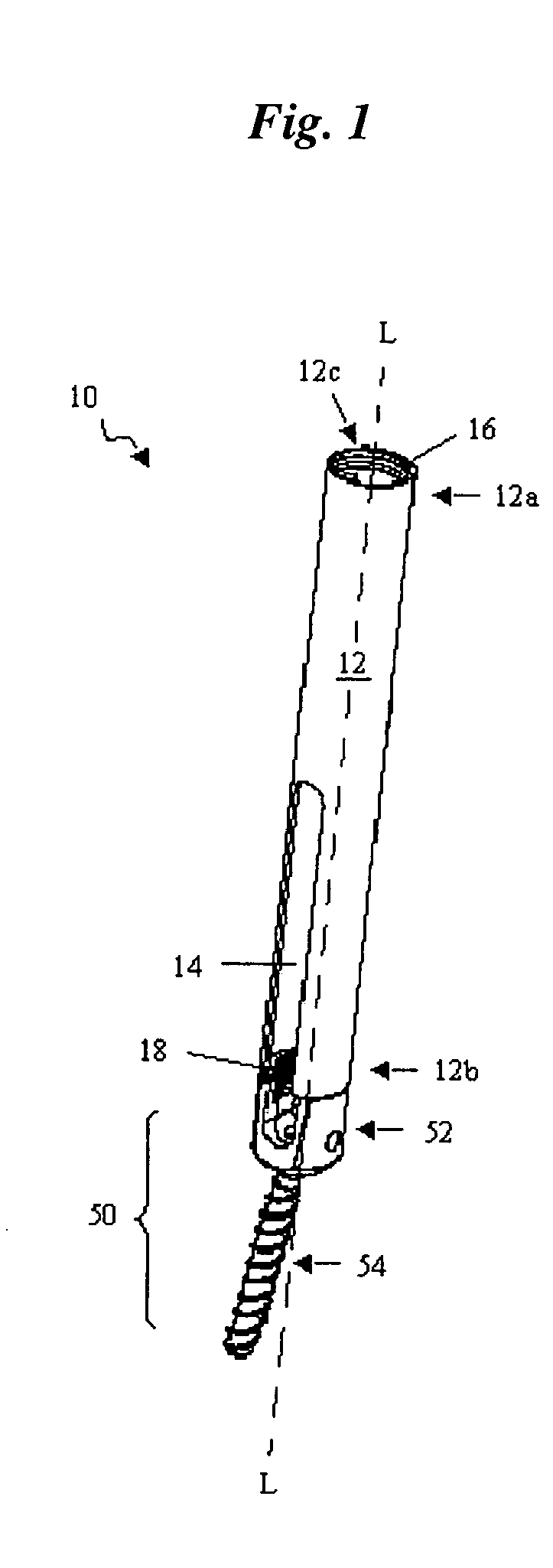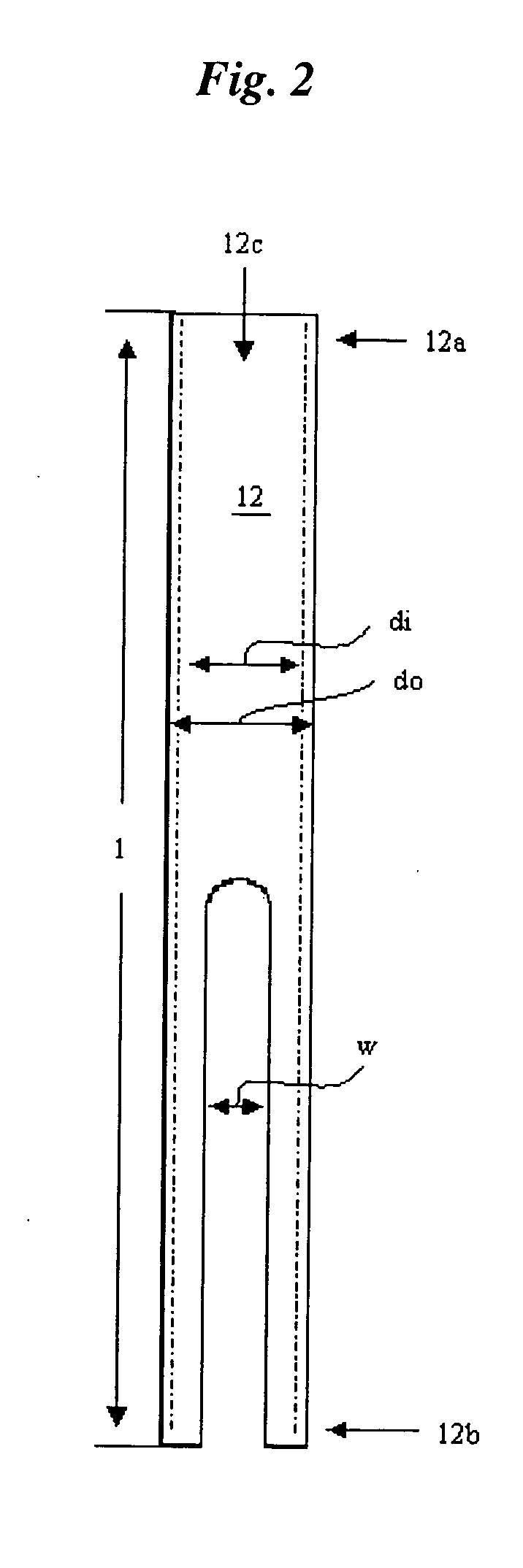Methods and devices for spinal fixation element placement
a technology of spinal fixation and element placement, which is applied in the field of spinal fixation element placement methods and devices, can solve the problems of increasing patient trauma and recovery time, significant damage to surrounding tissue and muscle, and undesired lengthening of surgical procedures
- Summary
- Abstract
- Description
- Claims
- Application Information
AI Technical Summary
Benefits of technology
Problems solved by technology
Method used
Image
Examples
Embodiment Construction
[0023] The present invention provides minimally invasive methods and devices for introducing a spinal fixation element into a surgical site in a patient's spinal column. In general, the method involves positioning a spinal fixation element through openings formed in at least two adjacent percutaneous access devices such that the spinal fixation element extends between the at least two adjacent percutaneous access devices in a lengthwise orientation. The spinal fixation element can then be advanced in a distal direction to seat the spinal fixation element in the receiver heads of the adjacent spinal anchors, or to otherwise position the spinal fixation element in relation to the adjacent spinal anchors. A fastening element or other closure mechanism can optionally be applied to each spinal anchor to engage the spinal fixation element within the receiver heads of the adjacent anchors, or to otherwise directly or indirectly connect the spinal fixation element to the anchors.
[0024] Whi...
PUM
 Login to View More
Login to View More Abstract
Description
Claims
Application Information
 Login to View More
Login to View More - R&D
- Intellectual Property
- Life Sciences
- Materials
- Tech Scout
- Unparalleled Data Quality
- Higher Quality Content
- 60% Fewer Hallucinations
Browse by: Latest US Patents, China's latest patents, Technical Efficacy Thesaurus, Application Domain, Technology Topic, Popular Technical Reports.
© 2025 PatSnap. All rights reserved.Legal|Privacy policy|Modern Slavery Act Transparency Statement|Sitemap|About US| Contact US: help@patsnap.com



